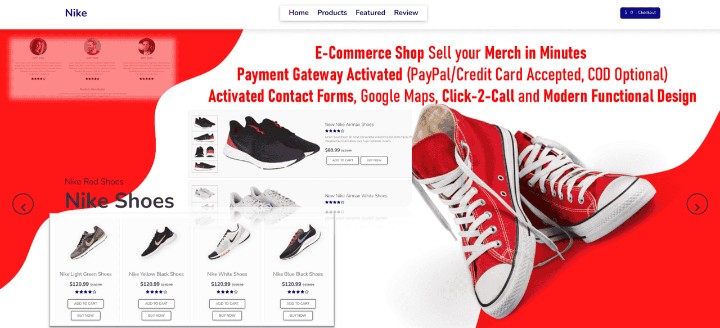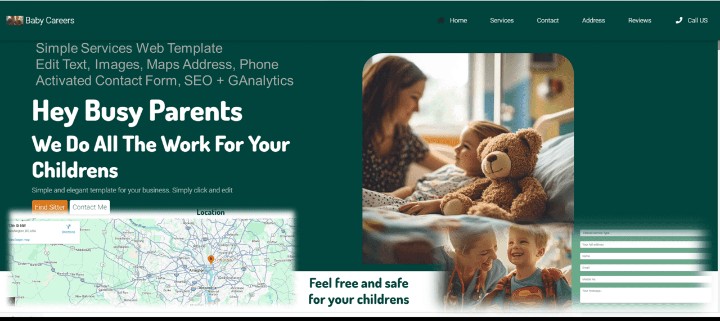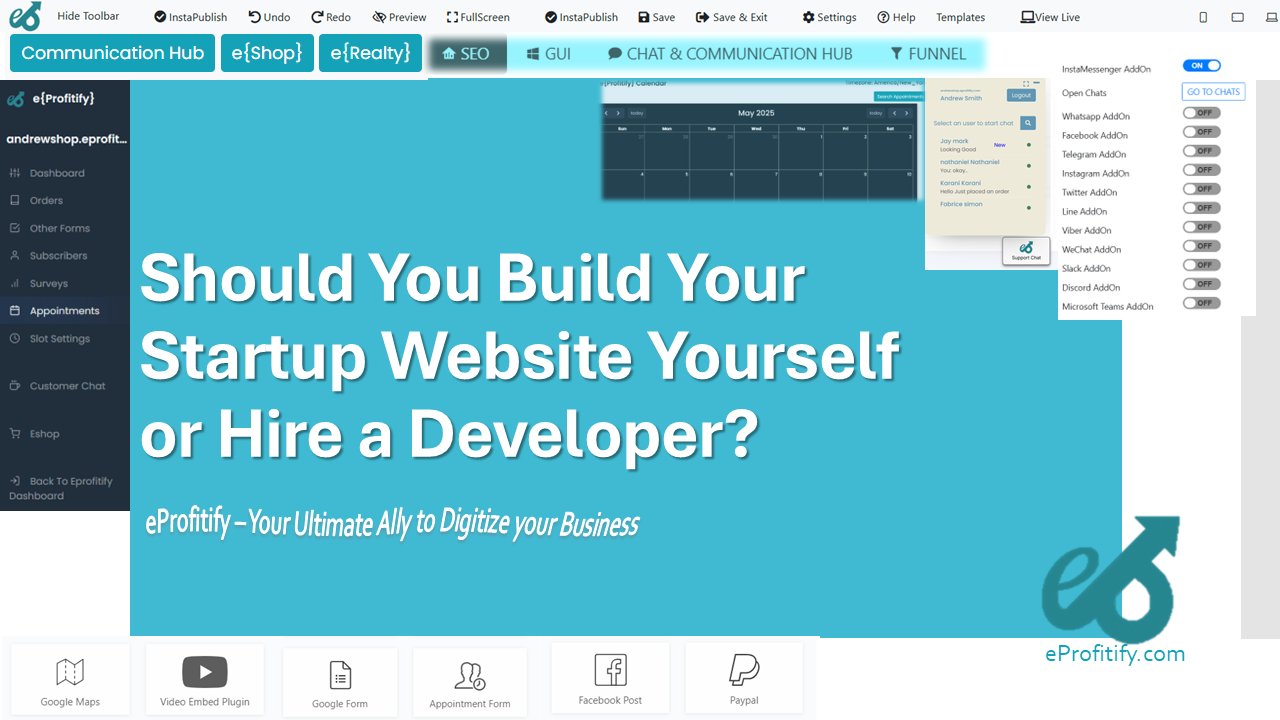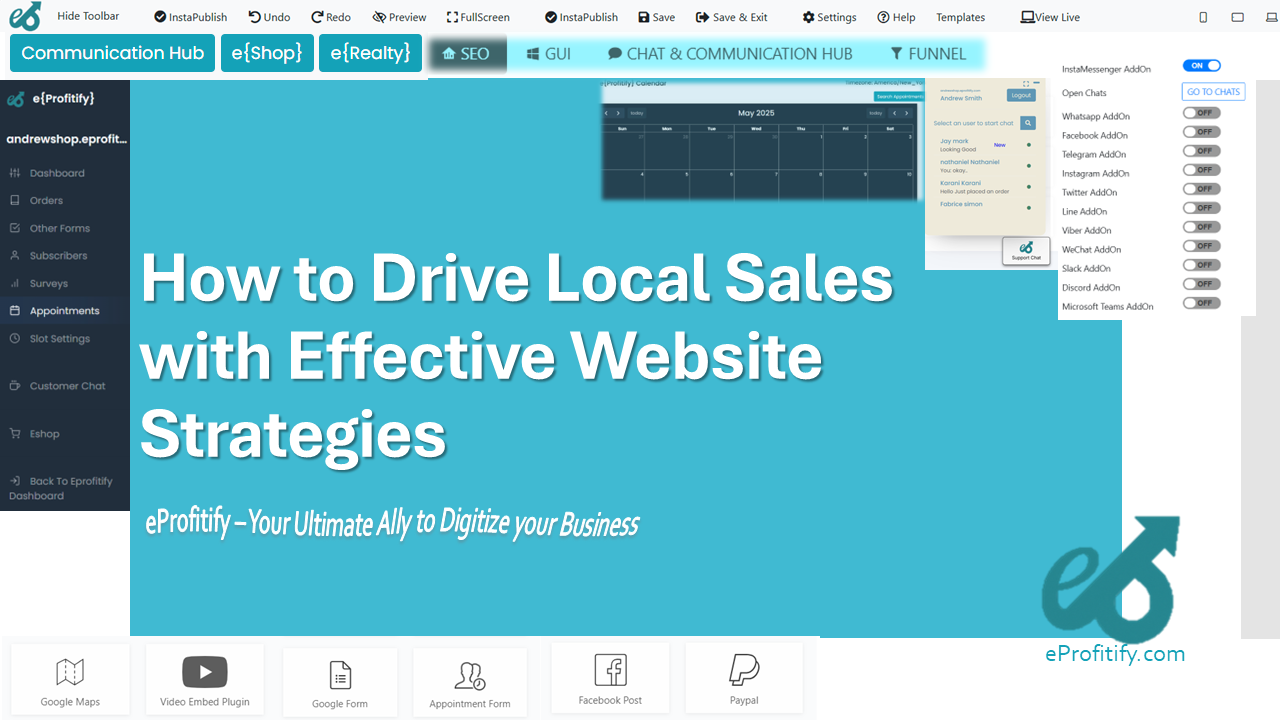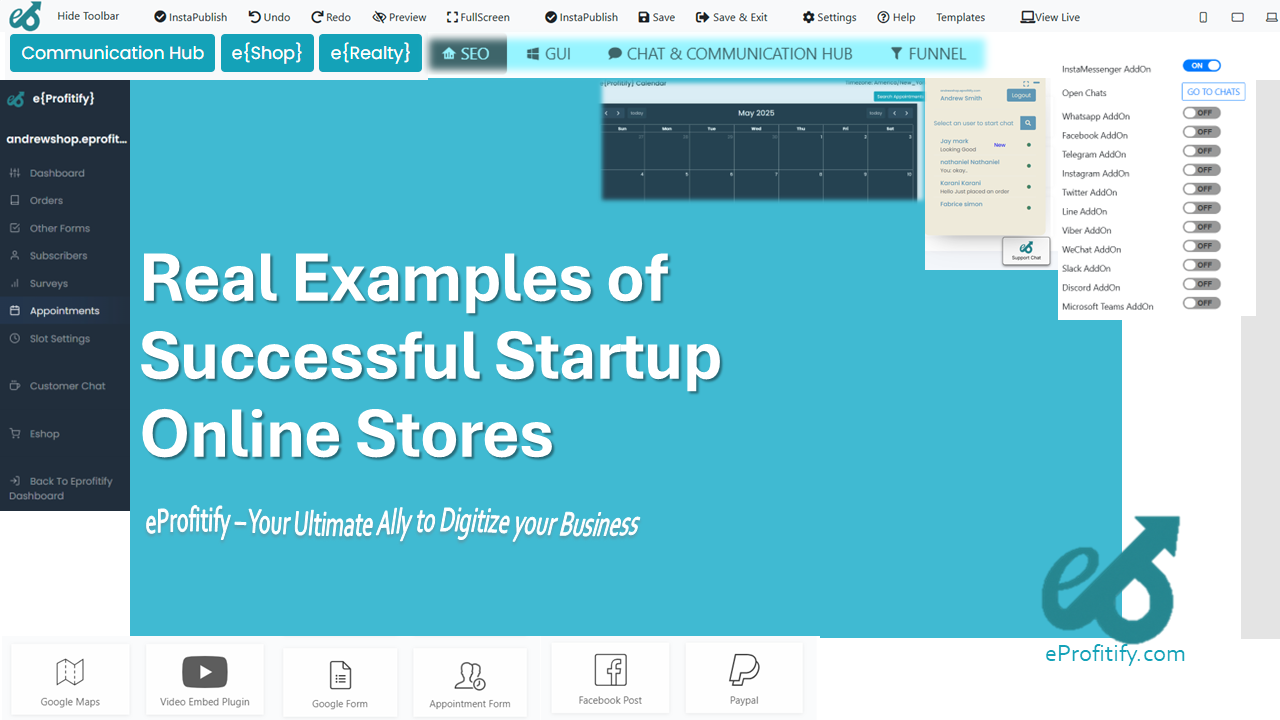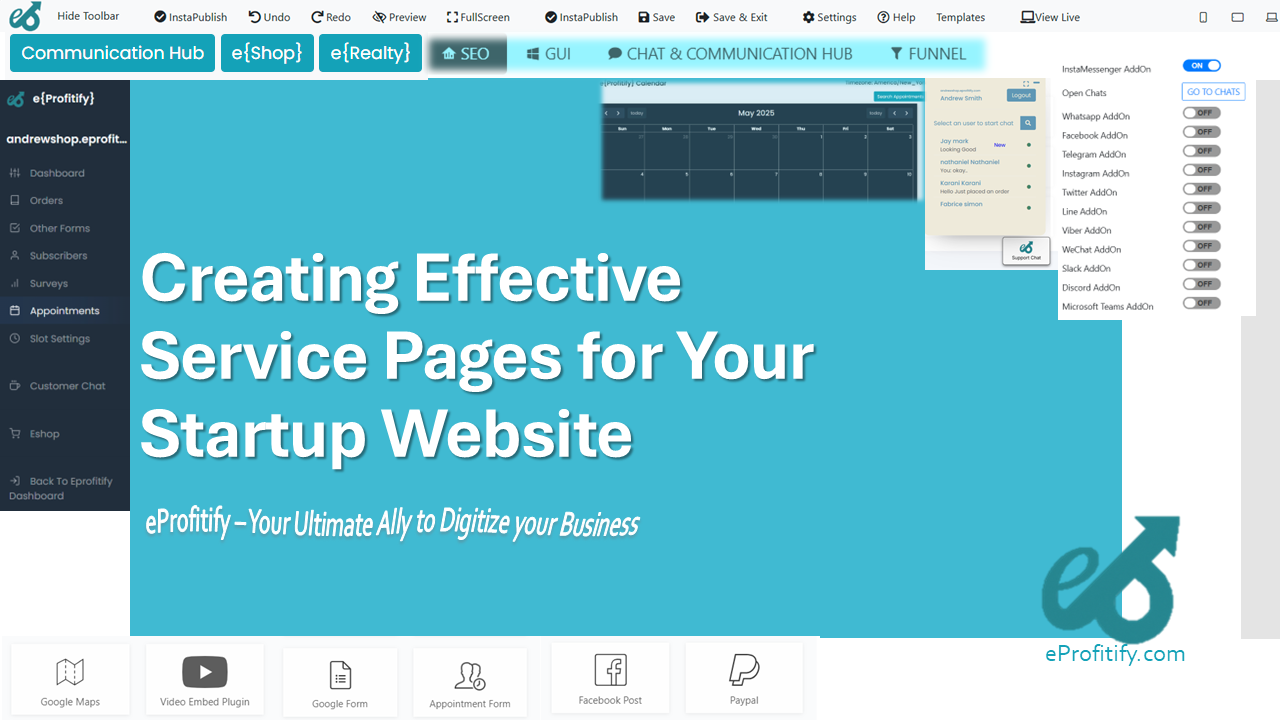How to Optimize Your Website for Local Search
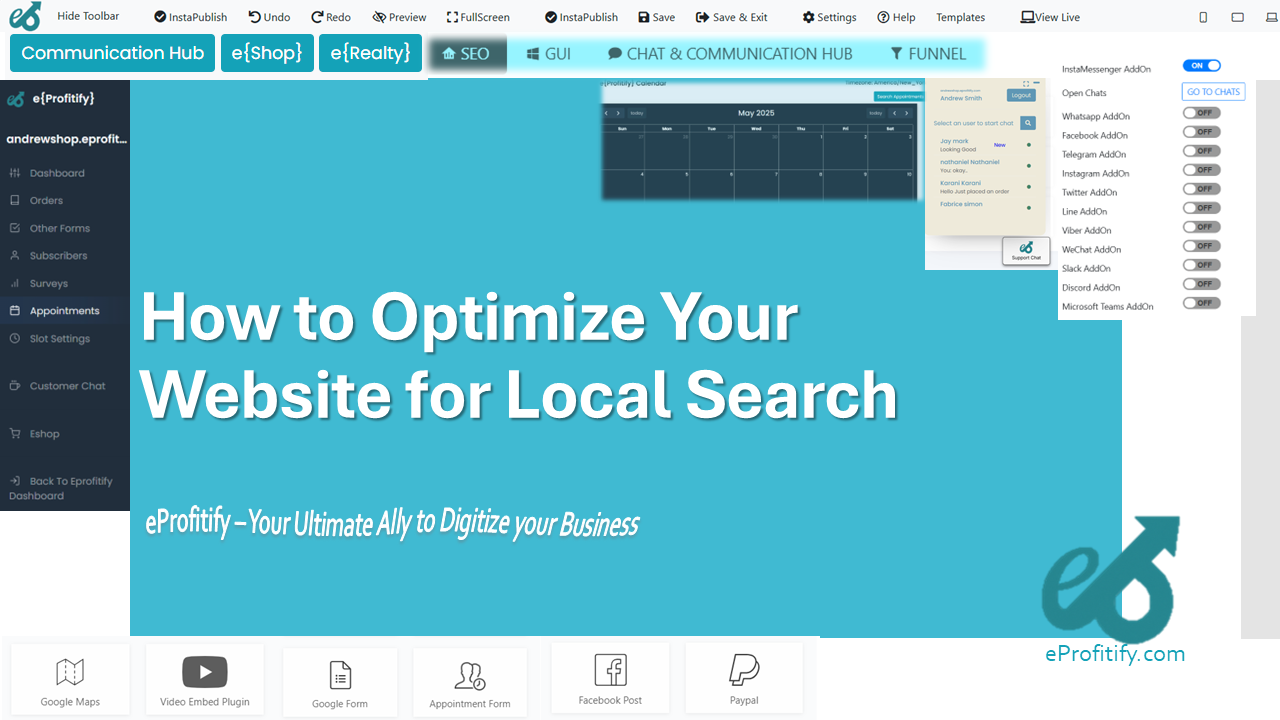
How to Optimize Your Website for Local Search: A Comprehensive Guide
In today’s hyper-connected world, local search engine optimization (SEO) is critical for businesses aiming to attract nearby customers. With 46% of all Google searches seeking local information and 78% of local mobile searches resulting in offline visits, optimizing your website for local search isn’t optional—it’s essential. This guide breaks down actionable strategies to dominate local search rankings, supported by statistics and modern tools like eprofitify, a leading platform offering robust website publishing, management, and customer engagement solutions.
1. Claim and Optimize Your Google Business Profile (GBP)
Your Google Business Profile (GBP), formerly Google My Business (GMB), is the cornerstone of local SEO. A complete GBP profile makes your business 70% more likely to attract location-based visits.
Steps to optimize:
- Verify your listing: Ensure accuracy in business name, address, phone number (NAP), and operating hours.
- Add high-quality photos: Businesses with images receive 42% more requests for directions.
- Use local keywords: Incorporate location-based terms (e.g., “coffee shop in Austin”) in your profile description.
- Encourage reviews: 87% of consumers read online reviews for local businesses. Respond promptly to boost credibility.
How eprofitify helps: The platform’s CRM and instant messaging tools streamline customer interactions, making it easier to request and manage reviews while maintaining real-time communication.
2. Target Local Keywords Strategically
Location-specific keywords drive targeted traffic. For example, “best pizza near me” or “plumber in Miami” have high intent. Use tools like Google Keyword Planner or Ahrefs to identify terms with local search volume.
Best practices:
- Include cities or neighborhoods in meta titles, headers, and content.
- Create location-specific landing pages if serving multiple areas.
- Optimize for voice search: 58% of consumers use voice search to find local businesses.
Stat to note: “Near me” searches have grown by 150% in the past two years, emphasizing the need for hyper-local targeting.
3. Optimize On-Page SEO for Local Relevance
Ensure your website aligns with local search intent through on-page elements:
- Title tags and meta descriptions: Include city names and services (e.g., “Denver SEO Services | Expert Local Marketing”).
- Header tags: Use H1 and H2 tags to highlight services and locations.
- Content localization: Write blog posts like “Top 5 Parks in Houston” or “Guide to Chicago’s Food Scene.”
How eprofitify helps: Its SEO-friendly templates and built-in analytics simplify on-page optimization, while the CMS allows easy content updates tailored to local audiences.
4. Build Local Citations and NAP Consistency
Local citations (mentions of your business name, address, and phone number on directories) improve local rankings. Inconsistent NAP data can confuse search engines, leading to lower rankings.
Prioritize directories like:
- Yelp
- Yellow Pages
- Industry-specific platforms (e.g., ZocDoc for healthcare)
Stat: Businesses listed on 10+ directories see a 15% increase in local search visibility.
How eprofitify helps: Its automated citation management ensures NAP consistency across platforms, reducing manual effort.
5. Leverage Online Reviews
Positive reviews build trust and improve local rankings. Google’s algorithm prioritizes businesses with high ratings (4+ stars).
Strategies:
- Ask satisfied customers to leave reviews via email or SMS.
- Address negative feedback professionally.
- Highlight reviews on your website.
Stat: 73% of consumers trust a business more after reading positive reviews.
How eprofitify helps: Use its CRM and instant messaging tools to automate review requests and track feedback in real time.
6. Optimize for Mobile Users
With 60% of local searches conducted on mobile devices, mobile optimization is non-negotiable.
Steps:
- Ensure fast loading speeds (under 3 seconds).
- Use responsive design.
- Simplify checkout/booking processes.
How eprofitify helps: Its mobile-responsive templates and integrated ecommerce tools provide seamless mobile experiences, from browsing to appointment scheduling.
7. Create Locally Relevant Content
Publish content that resonates with your community:
- Local events or sponsorships
- Customer success stories from the area
- Guides addressing local pain points (e.g., “Winterizing Your Home in Minneapolis”)
Stat: Websites with localized content see a 12% higher conversion rate.
8. Utilize Social Media for Local Engagement
Engage with local audiences on platforms like Facebook, Instagram, or Nextdoor. Share posts tagged with local landmarks or hashtags (e.g., #SupportLocalToronto).
How eprofitify helps: Its social media integration tools allow scheduled posts, audience targeting, and performance analytics, amplifying your local reach.
9. Monitor Performance with Analytics
Track local SEO success using tools like Google Analytics and Search Console. Monitor metrics such as:
- Local keyword rankings
- Website traffic from local searches
- GBP insights (calls, direction requests)
How eprofitify helps: Centralized dashboards provide real-time analytics, helping you refine strategies based on local user behavior.
Why eprofitify is a Game-Changer for Local SEO
Managing a local SEO strategy demands time and precision. eprofitify simplifies this with features tailored for businesses:
- Instant messaging: Engage customers directly via live chat.
- Appointment management: Let clients book services online, boosting local conversions.
- Ecommerce integration: Sell products with localized inventory and pickup options.
- CRM: Track customer interactions and automate follow-ups.
- SEO tools: Built-in optimizations ensure your content ranks higher locally.
Businesses using eprofitify report a 30% increase in local traffic within six months, thanks to its all-in-one capabilities.
Final Thoughts
Optimizing your website for local search is an ongoing process but pays dividends in customer acquisition and loyalty. By combining strategic SEO practices with eprofitify’s advanced tools, businesses can dominate local search results, outpace competitors, and build lasting community relationships. Start implementing these steps today to turn local searches into lifelong customers.
Word count: ~1,000 words
By integrating these actionable strategies and leveraging eprofitify’s robust platform, your business is poised to thrive in the dynamic landscape of local search.
